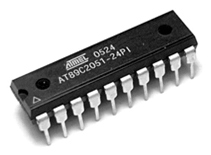Arduino is a project, open-source hardware, and software platform used to design and build electronic devices. It designs and manufactures microcontroller kits and single-board interfaces for building electronics projects.
The Arduino boards were initially created to help students with non-technical backgrounds.
The designs of Arduino boards.
It also provides an IDE (Integrated Development Environment) project, which is based on the Processing Language to upload the code to the physical board.
The projects are authorized under the GPL and LGPL. The GPL is named a GNU General Public License. The licensed LGPL is named as GNU Lesser General Public License. It allows the use of Arduino boards, its software distribution, and can be manufactured by anyone.
It is also available in the form of self practicing kits.
The Arduino
is used for various purposes, such as:
- Finger button
- Button for motor activation
- Light as a sensors
- LED button
- Designing
- The Building of electronic devices
What is Arduino?
Arduino is a software as well as a hardware platform that helps in making electronic projects. It is an open-source platform and has a variety of controllers and microprocessors. There are various types of Arduino boards used for various purposes.
The Arduino is a single circuit board, which consists of different interfaces or parts. The board consists of a set of digital and analog pins that are used to connect various devices and components, which we want to use for the functioning of the electronic devices.
Most of the Arduino consists of 14 digital I/O pins.
The analog pins in Arduino are mostly useful for fine-grained control. The pins in the Arduino board are arranged in a specific pattern. The other devices on the Arduino board are USB ports, small components (voltage regulator or oscillator), microcontroller, power connector, etc.
Features
The features of Arduino are listed below:
- Arduino programming is a simplified version of C++, which makes the learning process easy.
- The Arduino IDE is used to control the functions of boards. It further sends the set of specifications to the microcontroller.
- Arduino does not need an extra board or piece to load new code.
- Arduino can read analog and digital input signals.
- The hardware and software platform is easy to use and implement.
Microcontroller
The most essential part of the Arduino is the Microcontroller, which is shown below:

- The microcontroller is a small and low-power computer. Most of the microcontrollers have RAM (Random Access Memory), CPU (Central Processing Unit), and memory storage like other computer systems.
- It has a very small memory of 2KB (two Kilobytes). Due to less memory, some microcontrollers are capable of running only one program at a time.
- It is a single chip that includes memory, Input/Output (I/O) peripherals, and a processor.
- The GPIO (General Purpose Input Output) pins present on the chip help us to control other electronics or circuitry from the program.
Electronics devices around us
We have many electronic devices around us. Most of the appliance consists of a microcontroller for their functioning. Let's discuss some of the examples.
- The microcontroller present in Microwave Oven accepts the user input and controls the magnet run that generates microwave rays to cook the food and displays the output timer.
- Modern cars also contain dozens of microcontrollers working in tandem (one after another) to control functions like lighting, radio interface, etc.

Comments
Post a Comment